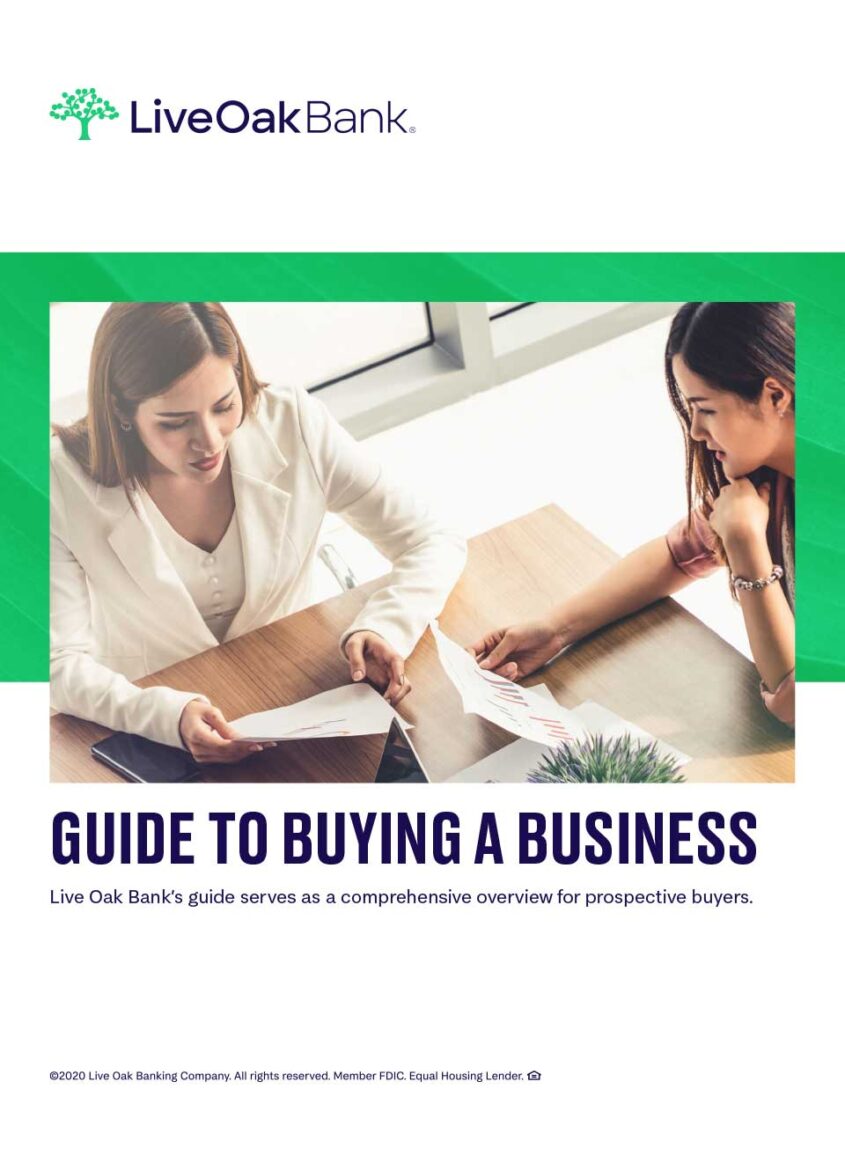In simplest terms, a business acquisition loan is funding from a bank to help you purchase a business. Buying a business often takes more capital than entrepreneurs have on hand, which is where banks like Live Oak can help. Lenders have varying requirements, but it’s essential to have a solid business plan, strong personal credit and a passionate, entrepreneurial spirit. The funding timeline for a business acquisition loan is 60 days on average, depending on customer readiness and real estate involvement.

BUSINESS ACQUISITION LOANS
Loan Amount
Up to $5 million+,
varies by loan product
Loan Term
10-25 years
Interest Rate
The prime rate plus a lender percentage
PREPARING FOR OWNERSHIP
Before you approach a bank for acquisition financing, take time to prepare, research and put together a thorough business plan. Your business plan not only proves to the bank that you’ve considered every aspect of owning a business, but it will serve as your roadmap. Check out our video to learn more about the critical elements of a successful business plan.
THE ACQUISITION PROCESS
There are multiple steps involved in purchasing a business. Remember that acquisition is simply a more formal banking term we use when discussing the purchase of a business.
With Live Oak, you get a partner who believes in your success and is willing to take the journey alongside you. Here’s the process we’ll take together:
Gather Your Team
Before you embark on an acquisition, it’s wise to have a team of trusted advisors, including a CPA and an attorney. They should have prior experience in acquisition financing.
Explore Financing Options
Lenders who understand the unique aspects of a business will be able to structure the loan to benefit both the buyer and seller.
Determine the Purchase Price/Deal Structure
Agreeing on the purchase price is a fundamental step that should occur early in the process. The purchase price should be based on a combination of asset values, annual revenues, multiples of earnings and other intangible assets.
Sign a Letter of Intent
Sellers often require the buyer to sign a letter of intent, which is an agreement that prohibits the seller from negotiating with other potential buyers.
Secure Financing
A lender will look at the buyer’s personal credit in addition to the financials of the business. How someone manages their personal credit is typically a strong indicator of how they will handle the business’s credit.
Financials
The lender will ask for the following requirements from the buyer:
- Three years of business tax returns
- Year-to-date (YTD) income statement and current balance sheet
- Comparable income statement and balance sheet from previous year
- Projections for at least the first three years under new ownership
Due Diligence
As you navigate through the due diligence period, this is the time where the serious research and analysis happens. Make observations and inquiries related to historical financials, business tax returns, customer/client lists, pipeline, marketing and much more.
Close the Deal
At this point, the deal is complete and there is no room for further negotiations. There’s a fairly robust closing checklist that the buyer will need to complete before closing the sale.

GUIDE TO BUYING A BUSINESS
As acquisition loan experts, we know what a successful ownership transition entails. Our “Guide to Buying a Business” offers a comprehensive look at what is involved when it comes to a business acquisition.
There are several factors at play that create a favorable environment for buying a business. From low interest rates to the glut of Baby Boomers eager to sell, many buyers are seizing the moment and pursuing a purchase.